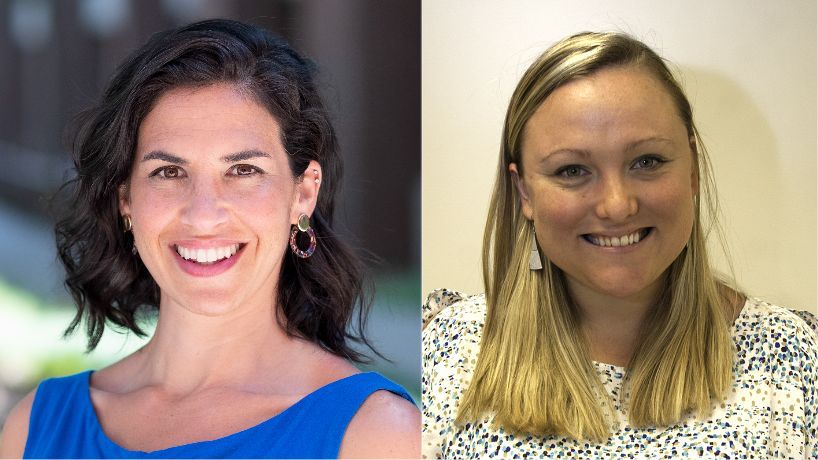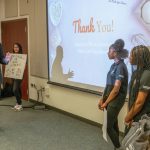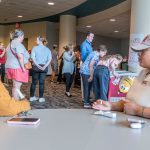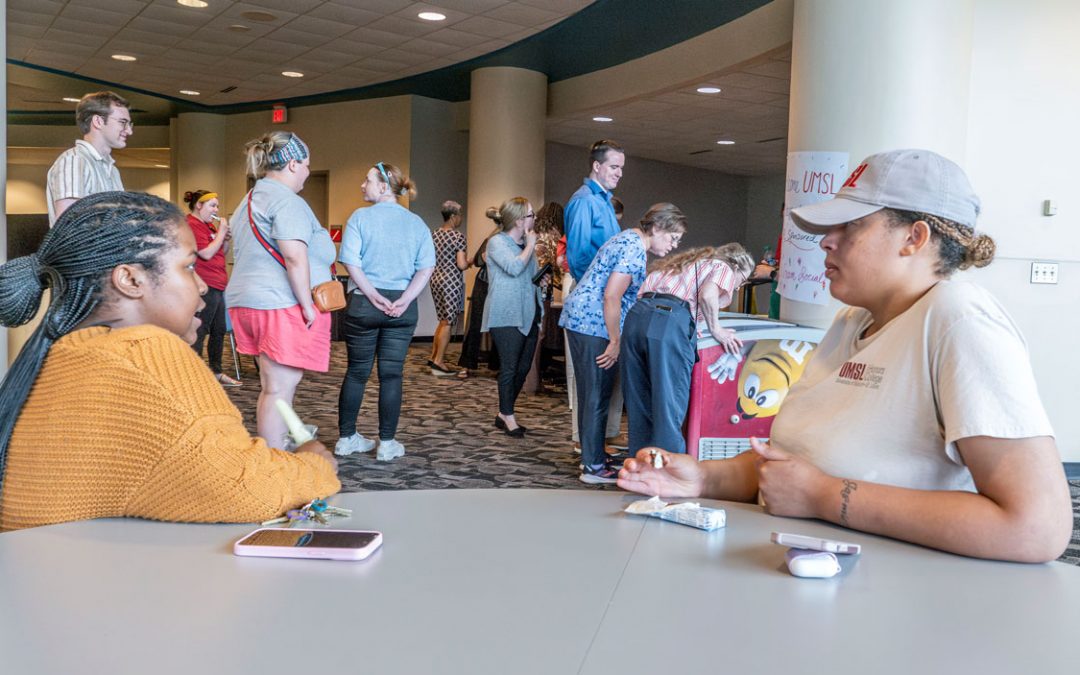
Rachel Winograd (left) and Claire Wood, faculty members at the Missouri Institute of Mental Health, led a webinar covering how COVID-19 is placing people who struggle with opioid addiction at risk and how the pandemic is increasing the use of telemedicine. (Winograd photo by August Jennewein; Wood photo provided by Claire Wood)
For someone who is recovering from opioid addiction, the sense of isolation brought on by stay-at-home orders can be a major obstacle. Remaining apart from family and friends, along with job loss, financial strain and general uncertainty, can lead to relapse.
Associate Research Professor Rachel Winograd and Assistant Research Professor Claire Wood, both from the University of Missouri–St. Louis‘ Missouri Institute of Mental Health, addressed COVID-19’s far-reaching effects during the UMSL COVID-19 Research Conversation held on Friday via Zoom. More than 20 faculty members from across disciplines joined the discussion, titled “Impact of COVID-19 on People Who Use Opioids and Other Drugs, Providers and Systems of Care.”
Relapsing is a major concern as the pandemic brings stress and anxiety.
“People use drugs to cope, so there is a great risk of relapse occurring,” Winograd said.
In St. Louis, emergency medical services have responded to a significantly higher number of overdoses during the coronavirus pandemic compared to the same time period last year. Additionally, more people are overdosing in their homes, where help may not be readily available.
Supply shortages have also increased the danger of an overdose, as many prescription opioids sold in St. Louis and throughout Missouri are manufactured in Wuhan, China.
“There’s definitely been some supply disruptions,” Wood said. “Some of what we’ve heard is that the drugs are less potent and becoming harder to access. It could be that they are cut with more things and stretched to make them last longer.”
Substances added to the drugs could prove dangerous or even deadly, increasing the risks associated with using them.
But the coronavirus also offered a surprisingly positive impact on treatment by expanding the use of telemedicine. Because in-person visits to clinics could spread the virus, officials had to find alternatives.
“When COVID first started, federal government agencies began to tear down the regulations that had been in place forever,” Winograd said. “Within a period of about a week, barriers were removed that we had been working for decades to tear down.”
Required physical visits to access medications like methadone, which is used to treat narcotic drug addiction, changed to video chats or phone calls. Patients are given enough for a week or two weeks instead of having to visit the clinic every day, reducing the need for transportation.
Providers are also able to observe their clients’ lives more closely during video calls. Often, the background gives clues about if they have a home, where they are living and who’s living with them.
Although it’s a step forward, the use of telemedicine comes with obstacles.
“Telemedicine is an incredibly powerful tool, but we also have to be cautious of getting overly excited and jumping in too fully to switching entirely to telemed,” Winograd said.
Many patients lack access to a cellphone. Even if they have one, charging is a significant hurdle for the unhoused population. Restaurants and stores, where they would normally charge their phones, have limited hours or restrict the number of people inside.
Privacy is also a concern in regard to telemedicine. Some safeguards outlined in HIPAA pertaining to conducting online or phone appointments only over secure connections have been temporarily waived. Winograd is concerned that may affect the privacy of clients seeking treatment.
She recommends a mix of in-person and telemedicine treatment options to increase access for all patients. She also points out that for telemedicine to work long-term, universal access to the internet is a must.
The webinar closed with a discussion among attendees regarding possible research areas. Ideas included:
- Effectiveness and challenges of nursing via telemedicine
- Disparities in access to treatment
- Issues related to broadband access in rural areas
- Differences in access to telemedicine in rural and urban areas
- Effectiveness of telemedicine compared to direct care
- Creating consistent and coordinated messaging
- Why some providers take advantage of loosened regulations and others do not














